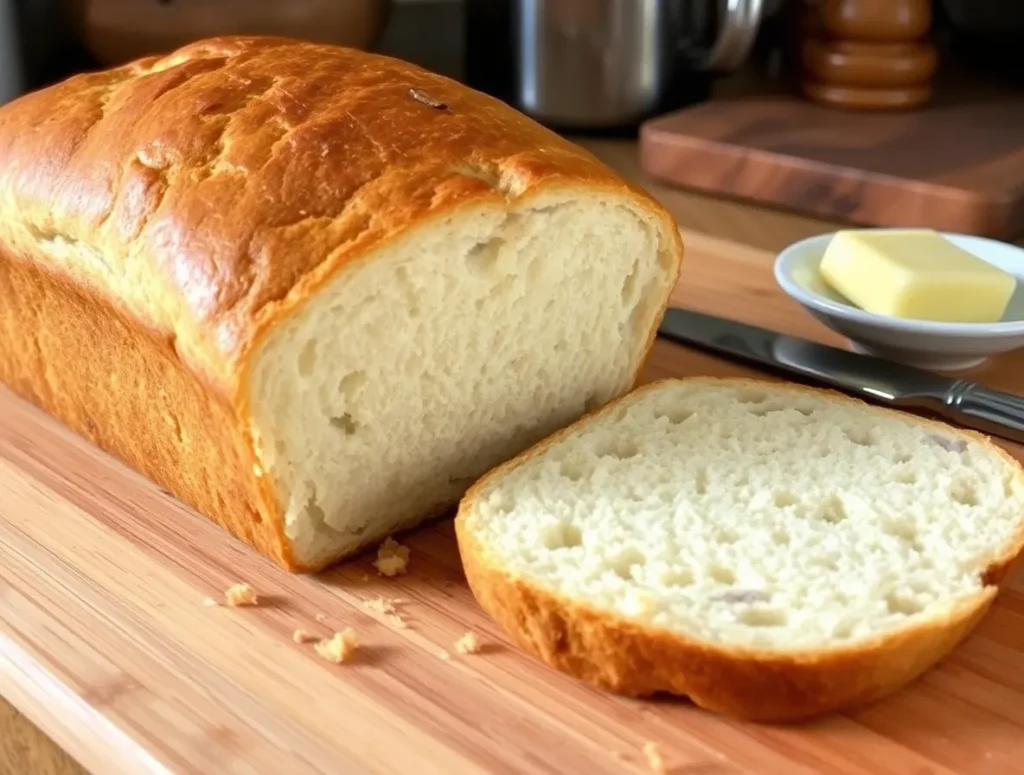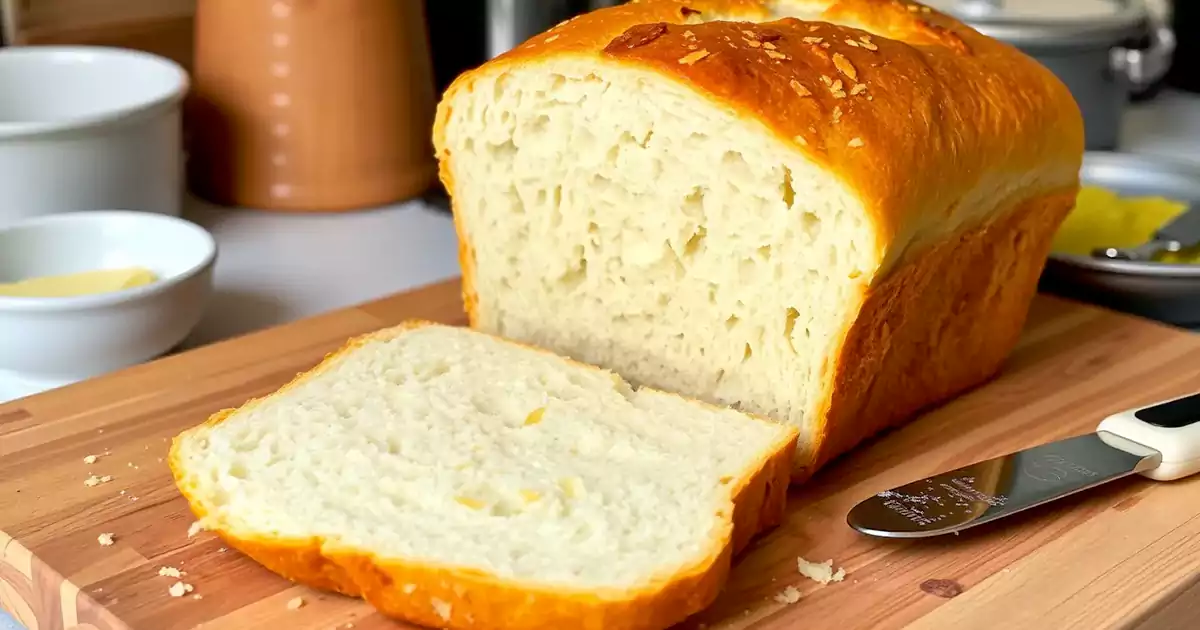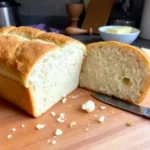Finding the best gluten-free bread can be a challenge. Many store-bought options are dry, crumbly, or lack the soft texture of traditional bread. But don’t worry—whether you’re looking for a delicious store-bought brand or an easy homemade recipe, you can enjoy soft, tasty, and satisfying gluten-free bread.
In this guide, we’ll explore:
- What makes a great gluten-free bread
- The top gluten-free bread brands to try
- A simple homemade gluten-free bread recipe
- Expert tips to keep your bread soft and fresh
If you’re tired of disappointing gluten-free bread, keep reading to discover the best options for your diet.
What Makes the Best Gluten-Free Bread?

Gluten-free bread has come a long way, with more options than ever that closely resemble traditional wheat-based bread. However, not all gluten-free breads are created equal. The best gluten-free bread should have a soft, moist texture, a pleasant flavor, and hold up well for sandwiches, toast, or any other use. Several key factors determine the quality of gluten-free bread.
Texture and Taste: Achieving Soft and Flavorful Bread
One of the biggest complaints about gluten-free bread is its tendency to be dry, crumbly, or dense. This happens because gluten, the protein that gives traditional bread its elasticity and chewiness, is missing. To achieve a softer, fluffier bread, the right combination of ingredients and baking techniques is crucial.
- Moisture-retaining ingredients like eggs, olive oil, and honey help prevent dryness
- Proper hydration of the dough ensures a soft crumb and prevents the bread from being too dense
- The right baking temperature and time help develop a light and airy texture
Key Ingredients That Make a Difference
The choice of ingredients plays a huge role in making gluten-free bread taste delicious while keeping its structure intact. Some of the most important components include:
- Gluten-free flour blends that combine different types of flour to mimic the texture of wheat flour
- Binders like xanthan gum, psyllium husk, or guar gum that replace the elasticity of gluten and help the bread hold its shape
- Leavening agents such as baking powder, baking soda, or yeast that help create a fluffy and airy texture
Best Gluten-Free Flour Blends for Bread
Using a single type of gluten-free flour rarely results in a perfect loaf. Instead, most successful gluten-free breads use a blend of different flours to achieve the right balance of structure, flavor, and softness. Different types of flour contribute to the texture in different ways:
- Rice flour is light and neutral in flavor, commonly used as a base
- Almond flour adds moisture, richness, and a slightly nutty taste
- Tapioca starch helps with elasticity and chewiness, making the bread less crumbly
- Sorghum flour adds a mild sweetness and improves the texture
- Oat flour provides a soft, hearty feel and enhances flavor
How to Make Gluten-Free Bread Soft and Moist
Many people assume that gluten-free bread is naturally dry, but the right techniques can make a big difference. Here are some tips to achieve a soft and moist loaf:
- Using enough liquid is essential, as gluten-free flours absorb more liquid than wheat flour
- Letting the dough rest before baking allows the flour to hydrate properly
- Baking at the right temperature prevents dryness, and covering the bread with foil halfway through baking helps retain moisture
- Storing bread properly in an airtight container or freezing it in slices helps maintain freshness longer
When done right, gluten-free bread can be just as delicious as regular bread. Whether choosing a store-bought brand or baking from scratch, focusing on the right ingredients and techniques will help create soft, flavorful, and satisfying gluten-free bread every time.
Top 5 Best Gluten-Free Bread Brands to Try
With so many gluten-free bread brands on the market, it can be difficult to find one that has a great texture, tastes good, and holds up well for sandwiches or toast. The best gluten-free bread should be soft, flavorful, and free from the dense or crumbly texture that some gluten-free options tend to have. Here are five top-rated brands that consistently deliver quality and taste.
1. Udi’s Gluten-Free Bread
Udi’s is one of the most well-known brands in the gluten-free world, offering a variety of bread options, including whole grain, white sandwich bread, and cinnamon raisin. Their bread is soft, slightly chewy, and works well for sandwiches or toast. It is widely available in most grocery stores and has a mild flavor that pairs well with different toppings.
Why Choose Udi’s?
- Light and airy texture compared to other gluten-free breads
- Available in multiple flavors and varieties
- Easily found in most supermarkets and online stores
2. Canyon Bakehouse

Canyon Bakehouse is another highly rated brand that focuses on making gluten-free bread that tastes just like traditional wheat-based bread. Their bread is known for its soft texture, rich flavor, and ability to stay fresh longer. They offer popular varieties like 7-Grain, Ancient Grain, and Hawaiian Sweet Bread, making them a versatile choice for different tastes.
Why Choose Canyon Bakehouse?
- Soft and fluffy texture, ideal for sandwiches
- Free from dairy, nuts, and soy, making it allergy-friendly
- Stays fresh longer than many other gluten-free brands
3. Schär Artisan Baker Bread
Schär is a European brand known for its high-quality gluten-free products, and their Artisan Baker Bread is a favorite among those looking for a hearty and rustic loaf. This bread has a slightly denser texture, making it perfect for open-faced sandwiches and toast. It also contains sourdough, which enhances its flavor and helps with digestion.
Why Choose Schär?
- Made with sourdough for improved taste and digestion
- Rich and hearty texture, ideal for toasting
- Preservative-free and non-GMO ingredients
4. Little Northern Bakehouse
Little Northern Bakehouse offers soft and flavorful gluten-free bread with a focus on plant-based, non-GMO ingredients. Their bread is free from dairy, eggs, and soy, making it a great option for those with multiple food allergies. They offer unique varieties like Seeds & Grains, Millet & Chia, and Cinnamon & Raisin.
Why Choose Little Northern Bakehouse?
- 100% plant-based and free from common allergens
- Soft texture that doesn’t crumble easily
- Great for sandwiches, toast, and even French toast
5. Homemade vs. Store-Bought: Which is Better?
While store-bought gluten-free bread is convenient, some people prefer to bake their own to control the ingredients and ensure the freshest results. Homemade gluten-free bread allows you to use high-quality flours like almond flour, sorghum flour, and psyllium husk to achieve the perfect texture. With the right recipe, you can make soft, fluffy gluten-free bread that rivals even the best store-bought brands.
Key Benefits of Homemade Gluten-Free Bread:
Fresher and more cost-effective in the long run
No preservatives or artificial ingredients
Customizable flavors and textures
Easy Homemade Gluten-Free Bread Recipe
Making gluten-free bread at home is easier than you might think. With the right ingredients and techniques, you can enjoy a soft, flavorful loaf that rivals any store-bought option. This recipe is perfect for sandwiches, toast, or simply enjoying with butter and jam.

Ingredients You Need
To achieve a light and fluffy texture, choosing the right combination of gluten-free flours and binders is essential. Here’s what you’ll need:
- Gluten-free flour blend – A mix of rice flour, sorghum flour, and tapioca starch works best. You can also use a pre-made gluten-free flour blend.
- Psyllium husk or xanthan gum – Helps bind the dough and improves texture.
- Warm water or milk – Activates the yeast and keeps the bread moist.
- Active dry yeast – Provides lift and creates a fluffy crumb.
- Olive oil or melted butter – Adds richness and prevents dryness.
- Honey or sugar – Feeds the yeast and enhances the flavor.
- Salt – Balances the flavors.
- Eggs (or flaxseed eggs for a vegan option) – Adds structure and softness.
Step-by-Step Instructions
- Mix warm water or milk with the yeast and sugar in a small bowl. Let it sit for about ten minutes until it becomes frothy. This step ensures that the yeast is active and will help the bread rise properly.
- In a large mixing bowl, combine the gluten-free flour blend, psyllium husk or xanthan gum, and salt. Stir well to distribute the ingredients evenly.
- Add eggs, olive oil, and the activated yeast mixture to the dry ingredients. Mix using a stand mixer with a dough hook or a hand mixer with paddle attachments. The dough will be sticky, which is normal for gluten-free bread.
- Cover the bowl with a clean towel and let the dough rise in a warm place for about 60 to 90 minutes or until it has doubled in size. If your kitchen is cold, placing the bowl in a slightly warm oven can help.
- Preheat the oven to 375°F or 190°C. Transfer the dough into a greased loaf pan and smooth the top with a wet spatula to prevent cracking. Bake for 40 to 50 minutes until the top is golden brown and a toothpick inserted in the center comes out clean.
- Allow the bread to cool in the pan for about ten minutes before transferring it to a wire rack. For the best texture, let it cool completely before slicing. Store leftovers in an airtight container or freeze slices for later use.
Tips for Soft and Moist Bread
- Using a blend of flours instead of just one type provides better texture.
- Psyllium husk or xanthan gum is essential for structure and elasticity.
- Ingredients like olive oil, eggs, and honey help keep the bread soft.
- Checking the bread towards the end of baking prevents it from drying out.
Homemade gluten-free bread may take a little practice, but once you master the process, you’ll never go back to store-bought versions.

Common Mistakes & Tips for Perfect Gluten-Free Bread
Baking gluten-free bread comes with its own set of challenges. Without gluten to provide structure and elasticity, it’s easy to end up with a loaf that is too dense, dry, or crumbly. Here are some common mistakes people make when baking gluten-free bread and expert tips to ensure you get a soft, flavorful loaf every time.
Not Using a Binder
One of the most common mistakes is skipping binders, which help hold the bread together. Gluten-free flour lacks the elasticity and structure that gluten provides, which can result in dry and crumbly bread.
To fix this, always use a binding agent such as xanthan gum, psyllium husk, or guar gum. These ingredients improve texture and give the bread a soft and chewy feel. If a recipe does not include a binder, add about half to one teaspoon per cup of flour.
Overbaking or Underbaking
Gluten-free bread tends to dry out quickly if overbaked, but underbaking can leave it gummy or dense. Many people struggle to find the right baking time.
To avoid this, use an oven thermometer to ensure the temperature is accurate. Baking at a slightly lower temperature for a longer time allows even cooking. You can check for doneness by tapping the bottom of the loaf—if it sounds hollow, it is ready. An internal temperature of 205 to 210 degrees Fahrenheit is ideal for fully baked gluten-free bread.
Using the Wrong Flour Blend
Not all gluten-free flours work the same way. Some people use a single flour, such as almond or rice flour, which can result in a loaf that is too dense or gritty.
A better approach is to use a gluten-free flour blend rather than a single flour. The best blends include a mix of rice flour, sorghum flour, almond flour, or oat flour, along with starches like tapioca starch or potato starch to improve texture. Pre-made gluten-free flour blends from brands like Bob’s Red Mill or King Arthur are good choices for convenience.
Skipping the Hydration Step
Gluten-free flour absorbs liquid differently than wheat flour. Some bakers do not allow the flour enough time to fully absorb the moisture, leading to dry or crumbly bread.
To prevent this, let the dough rest for 20 to 30 minutes before baking so the flour can hydrate properly. This helps soften the bread and prevents a gritty texture. Adding extra moisture in the form of eggs, yogurt, or a bit of honey can also improve softness.
Improper Storage Leading to Dry Bread
Gluten-free bread dries out faster than regular bread because it lacks gluten to retain moisture. Many people store it the same way they would store wheat bread, which can lead to a hard and stale loaf.
For best results, store gluten-free bread in an airtight container at room temperature for up to two days. For longer storage, slice the bread and freeze it in an airtight bag. When ready to eat, reheat it in a toaster or oven for a fresh taste and texture. Avoid storing it in the refrigerator, as this makes it dry out faster.
By avoiding these common mistakes and following these tips, you can bake gluten-free bread that is soft, moist, and delicious every time.
Conclusion
Baking or buying the best gluten-free bread doesn’t have to be a challenge. By choosing the right ingredients, using proper techniques, and avoiding common mistakes, you can enjoy soft, tasty, and satisfying bread. Whether you opt for a trusted store-bought brand or a homemade recipe, the key is to experiment and find what works best for you. Try these tips and let us know your favorite gluten-free bread in the comments!
Try out this Gluten-Free Bread and let your creativity shine! We’d love to see your sweet creations. Tag us on Instagram at @SweetEatsRecipes and use the hashtag #Gluten-FreeBread to get featured.
Gluten-Free Bread
Equipment
- Large mixing bowl
- Stand mixer (optional)
- Loaf pan (9×5 inches)
- Measuring cup
- Whisk
- Oven
Ingredients
- 2 cups gluten-free flour blend
- 1 teaspoon xanthan gum (omit if using a pre-mixed flour with xanthan gum)
- 1 packet instant yeast (2 ¼ teaspoons)
- 1 tablespoon sugar or honey
- 1 teaspoon salt
- 2 eggs (or flaxseed egg substitute for vegan)
- 1 cup warm water (110°F)
- 2 tablespoons olive oil or melted butter
Instructions
- In a mixing bowl, combine the gluten-free flour, xanthan gum, yeast, sugar, and salt.
- In a separate bowl, whisk the eggs, warm water, and oil.
- Gradually add the wet ingredients to the dry mixture, stirring until well combined. If using a stand mixer, beat the dough on medium speed for 3-5 minutes.
- Pour the dough into a greased loaf pan and smooth the top with a spatula.
- Cover with a kitchen towel and let it rest for 30 minutes in a warm place until slightly risen.
- Preheat the oven to 375°F (190°C).
- Bake for 40-45 minutes or until the top is golden brown and the loaf sounds hollow when tapped.
- Let it cool completely before slicing for the best texture.
Notes
- Use a gluten-free flour blend that includes starches like tapioca or potato starch for a softer texture.
- Store the bread in an airtight container for up to two days, or freeze for longer storage.
- Reheat slices in a toaster or oven for a fresh-baked taste.


